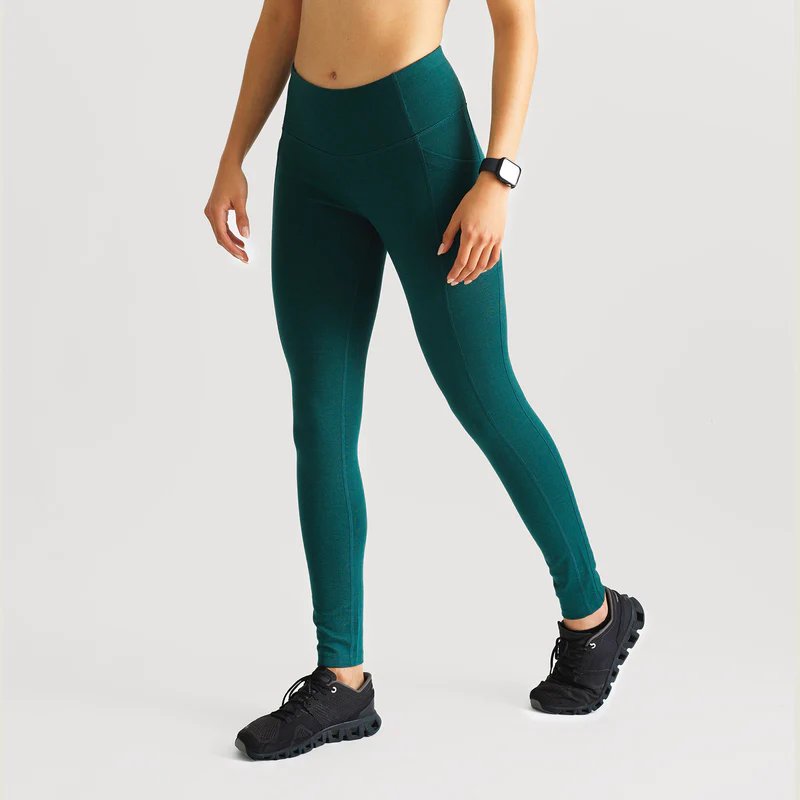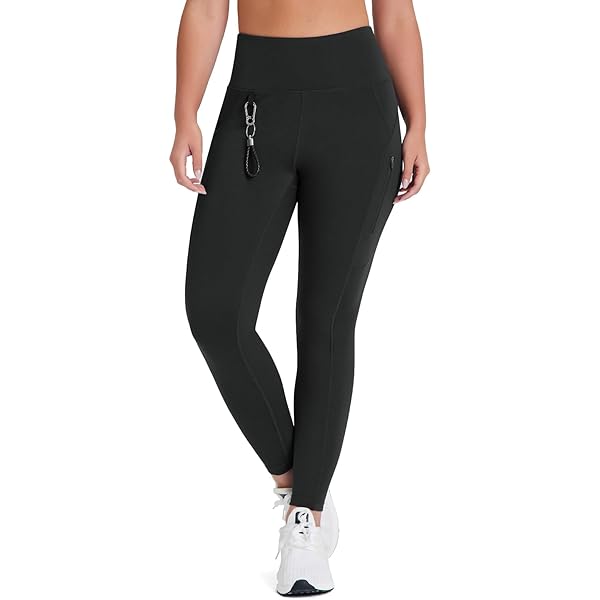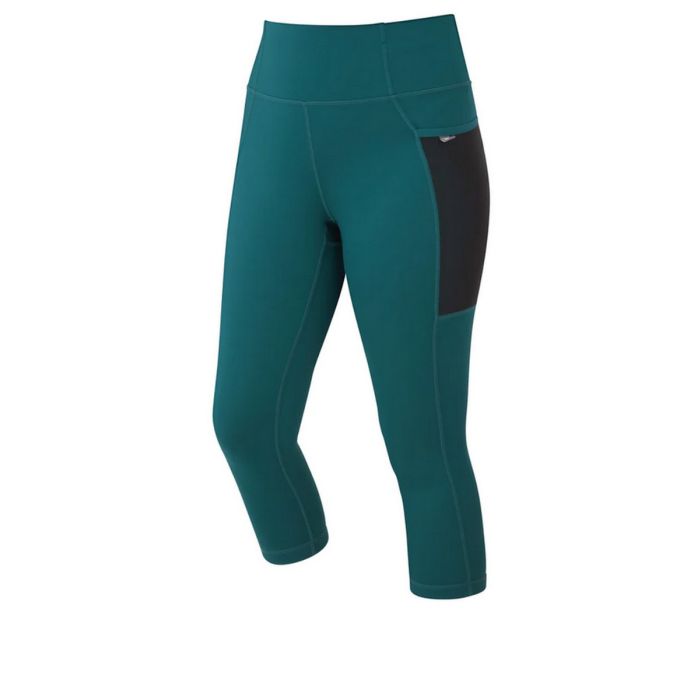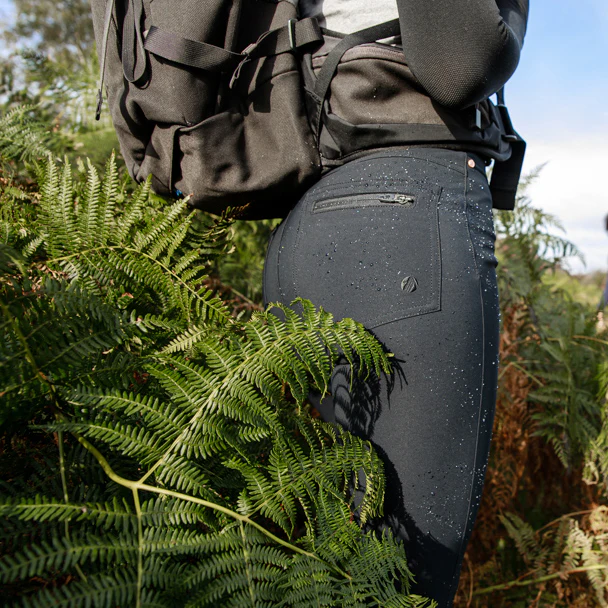I. Benefits

A. Comfort and Flexibility
Hiking leggings offer unparalleled comfort and flexibility compared to traditional hiking pants. Their form-fitting design allows for a greater range of motion, enabling hikers to navigate challenging terrain with ease. Whether climbing over rocks, crossing streams, or navigating steep inclines, the stretchy nature of leggings ensures unrestricted movement, reducing the risk of discomfort or chafing that can occur with looser-fitting pants. The superior comfort and flexibility provided by hiking leggings make them perfect for long hikes, allowing hikers to move freely and comfortably throughout their outdoor adventures.
B. Moisture-Wicking Properties
Another key benefit of hiking leggings is their moisture-wicking properties. Many leggings are crafted from performance fabrics designed to draw moisture away from the skin, keeping hikers dry and comfortable. This feature is particularly beneficial during strenuous hikes or in warm weather when sweat can accumulate, potentially leading to chafing and discomfort. The moisture-wicking capabilities of hiking leggings help regulate body temperature and prevent the accumulation of sweat, enhancing overall comfort during physical activity.
II. Choosing the Right Hiking Leggings
A. Material and Durability
When choosing hiking leggings, it’s essential to consider the material and durability. Look for leggings made from high-performance, durable fabrics such as nylon or polyester blends. These materials offer excellent abrasion resistance and are less likely to tear or snag on rough terrain, ensuring the leggings withstand the demands of hiking. Additionally, seek out leggings with reinforced stitching and durable construction to maximize longevity and durability, making them suitable for various hiking environments and conditions.
B. Fit and Comfort
The fit and comfort of leggings are paramount considerations when making a selection. Opt for leggings with a snug yet comfortable fit that allows for freedom of movement. The waistband should be secure and non-restrictive, providing support without digging in or causing discomfort during prolonged wear. Flatlock seams are also worth looking for, as they minimize chafing and irritation, further enhancing the overall comfort of the leggings for extended periods of wear.
C. Weather-Appropriate Design
The design of hiking leggings should be suited to the prevailing weather conditions. For warm-weather hiking, consider lightweight and breathable leggings with ventilated panels to promote airflow and cooling. In contrast, for cooler temperatures or inclement weather, opt for leggings with thermal properties or moisture-wicking insulation to keep the legs warm and dry. Selecting weather-appropriate hiking leggings ensures that hikers remain comfortable and protected in varying outdoor environments.
III. Features to Look for
A. Breathability and Ventilation

When selecting hiking leggings, prioritizing breathability and ventilation is essential. Look for leggings constructed from moisture-wicking, breathable fabrics that allow air to circulate and prevent the onset of sweat and heat build-up. Additionally, consider leggings with mesh panels or strategic ventilation zones, as these features facilitate airflow and cooling, particularly during warmer weather or high-intensity activities. Breathable hiking leggings contribute to overall comfort by maintaining a comfortable body temperature and reducing the risk of moisture-related discomfort during hikes.
B. Pockets and Storage Options
Effective storage is an important feature to consider in hiking leggings. Look for leggings with strategically placed pockets that provide secure storage for essentials such as a phone, keys, energy bars, or a small map. Pockets with secure closures, such as zippered or velcro pockets, are essential for keeping items safe and secure during active movement. Additionally, consider leggings with a minimalist and streamlined design to prevent bulkiness and ensure that the storage options seamlessly integrate with the overall functionality and comfort of the leggings.
IV. Style and Versatility
A. Fashionable Designs
Hiking leggings come in a variety of fashionable designs, offering a blend of style and functionality that appeals to outdoor enthusiasts. From vibrant colors to unique patterns and prints, they encompass a diverse range of stylish options. Additionally, some leggings feature fashionable design elements such as color blocking, graphic details, or trendy accents, allowing hikers to express their personal style while enjoying the outdoors. The fusion of fashion-forward designs with performance features makes hiking leggings a versatile and appealing choice for outdoor activities.
B. Layering and Styling Options
The versatility of leggings extends to their compatibility with various layering and styling options. Hikers can easily pair leggings with different types of outerwear, such as jackets, vests, or rain shells, to adapt to changing weather conditions or environments. Additionally, the streamlined fit of hiking leggings allows for seamless layering with hiking boots or trail shoes, ensuring a comfortable and cohesive look. The ability to layer and style hiking leggings according to individual preferences and environmental factors enhances their practicality and adaptability for a wide range of hiking scenarios.
V. Maintaining and Caring
A. Washing and Drying Tips

Proper washing and drying techniques are essential for maintaining the quality and longevity of leggings. When washing hiking leggings, it’s best to follow the manufacturer’s care instructions, typically found on the garment’s tag. In general, it’s recommended to wash leggings in cold water with a mild detergent to preserve the integrity of the fabric and prevent color fading. Avoid using fabric softeners, as they can impair the moisture-wicking properties of the fabric.
After washing, gently squeeze out excess water without wringing or twisting the leggings to maintain their shape. When drying, air drying is the optimal method for preserving the elasticity and overall integrity of the fabric. Avoid using high heat or tumble drying, as excessive heat can damage the fibers and reduce the lifespan of the leggings. Additionally, it’s important to store leggings in a cool, dry place away from direct sunlight and heat sources to prevent any potential degradation of the fabric.
B. Longevity and Durability
When investing in hiking leggings, longevity and durability are paramount considerations. The lifespan of hiking leggings can be prolonged through proper care, regular inspections, and adherence to usage guidelines. Regularly inspect the leggings for any signs of wear, such as fraying seams, fabric thinning, or pilling, and address any issues promptly to prevent further damage.
To maintain the durability of hiking leggings, it’s important to rotate their use to avoid excessive wear and tear from continuous use. Additionally, utilizing appropriate leggings for specific terrain and weather conditions can help preserve their condition. For example, selecting abrasion-resistant leggings for rugged trails or reinforced knee panels for rocky terrain can contribute to the longevity of the leggings.
When storing hiking leggings, ensure they are clean and completely dry to prevent the growth of mold or mildew. Fold leggings neatly or hang them in a designated storage area to prevent creasing or distortion of the fabric. By following these practices, hikers can extend the longevity and maintain the durability of their hiking leggings, ensuring they remain reliable and functional for numerous outdoor adventures.
In conclusion, the benefits of hiking leggings, including comfort, flexibility, and moisture-wicking properties, make them an excellent choice for outdoor enthusiasts. When choosing hiking leggings, prioritizing factors such as material and durability, fit and comfort, and weather-appropriate design ensures that hikers can make informed decisions and select the most suitable leggings for their outdoor adventures. Ultimately, the right pair of them can significantly enhance the overall hiking experience, providing comfort, support, and performance during outdoor pursuits.
